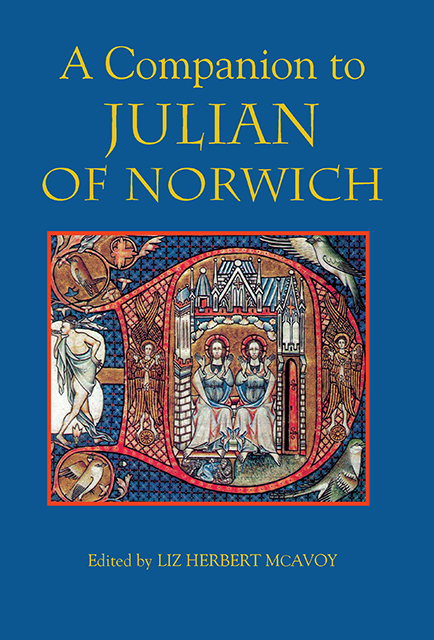Introduction: ‘God Forbede & that I am a Techere’: Who, or what, was Julian?
Published online by Cambridge University Press: 10 March 2023
Summary
The curtain against which Wanton Kate's face was pressing suddenly ceased to yield. There was a face on the other side and the anchoress was kissing her through the white linen cross.
The above quotation, taken from a 1934 novel by Enid Dinnis, the main character of which is based loosely on the figure of Julian of Norwich, speaks volumes for the ‘industry’ of imaginative projection which Julian has become during the course of the last century or so. The very fact that this now obscure novel reached its sixth imprint in 1934 attests to its contemporary popularity and to a burgeoning fascination with Julian and the anchoritic life which she embraced. Since that time, Julian has become an increasingly familiar figure within both literary and non-literary circles, and both religious and non-religious milieux. Interpreted famously as ‘a woman of our day’, and as being of particular comfort to the more worldly woman (such as ‘Wanton Kate’ in Dinnis’ novel), Julian's spirituality has spanned the centuries since her revelatory experiences of May 1373, which she proceeded to document and rework into two texts over the course of her long life. Moreover, these texts appear to speak just as cogently, relevantly and urgently to a modern (and, indeed, postmodern) audience as they must have done to those of her late-medieval contemporaries who had access to them. Julian's importance as a religious figure, if not a writer, seems to have been constant since the time of her own enclosure as an anchoress in 1393, surviving into the Reformation among the recusant nuns of northern France, enduring well into the Victorian era and reaching its present crescendo during the course of the twentieth century and beyond.
But what is it about the figure of Julian which has brought about such an extraordinary longevity of attraction and interest – even amongst readers who otherwise have little familiarity with the writers of the later Middle Ages? Is it, perhaps, that her writing embodies an almost unique female voice emerging from the conglomeration of male-authored texts which proliferated during the period and continued to dominate into modern times? Or is it that her writing intersected with a particular moment within English literary history which saw an inexorable spread of theological vernacularity and the haemorrhaging of widespread literacy into the laity?
- Type
- Chapter
- Information
- A Companion to Julian of Norwich , pp. 1 - 16Publisher: Boydell & BrewerPrint publication year: 2008

